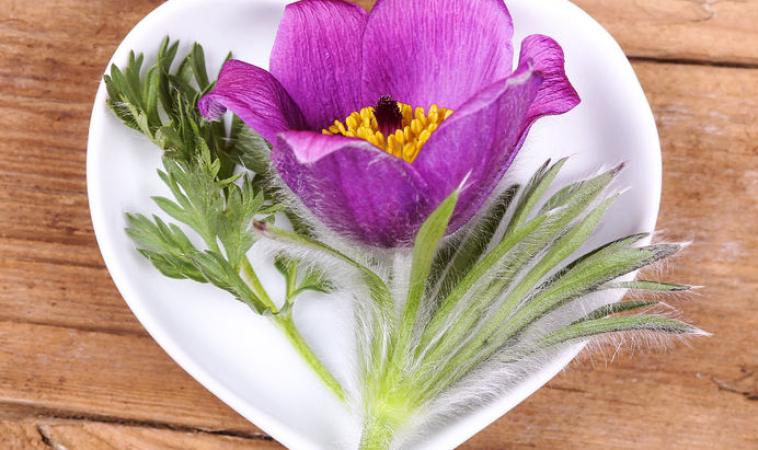Samuel Hahnemann, the originator of homeopathy, said of Pulsatilla:
“this, like all other medicines, is most suitably employed when not only the corporeal affections correspond but also when the mental and emotional alterations peculiar to the drug encounter similar states in the disease to be cured, or at least in the temperament of the subject of treatment.”
Mental Emotional Picture of Homeopathy
This is to say that a homeopathic remedy has a certain “temperament,” or mental emotional picture. This picture gives a certain “feeling” to a remedy, which often allows for more intuitive prescribing. Pulsatilla has a very distinct picture in this regard.
Pulsatilla Presents in Patient Form
Pulsatilla presents with a certain “softness.” They often are in need of both emotional and physical support from those around them; they can sometimes seem needy. This softness often manifests in a deeply emotional, sentimental, and sympathetic patient. When pulsatilla is indicated, the patient may be very weepy, and in need of reassurance frequently – the small child who needs the constant support of a parent’s hand, or needs to be held in order to feel better comes to mind.
The softness of pulsatilla can come across as shyness, and they are easily embarrassed. They may have a tendency to weep as well, with exceptional ease. They may be very emotional, with the slightest thing setting them into a crying fit. It is not uncommon for a pulsatilla state to present with weeping as the patient is relaying the story of the illness. The crying will be soft and tender. Also, the crying will have little self-consciousness; they will not be embarrassed about their tears.
A Final Thought…
A final thought in considering pulsatilla is the manner in which symptoms seem to change. Their moods will change regularly, and without rationale. They may become irritable, and then back to timid. But also, the physical symptoms change, with headaches one day, and diarrhea the next, and coughing with green sputum throughout, but resolution for 2 or 3 days of all symptoms, then they will return, without rhyme or reason. It can be very frustrating, because there seems to be no pattern to the symptoms on which to prescribe.
 Node Smith, associate editor for NDNR, is a fifth year naturopathic medical student at NUNM, where he has been instrumental in maintaining a firm connection to the philosophy and heritage of naturopathic medicine amongst the next generation of docs. He helped found the first multi-generational experiential retreat, which brings elders, alumni, and students together for a weekend campout where naturopathic medicine and medical philosophy are experienced in nature. Three years ago he helped found the non-profit, Association for Naturopathic ReVitalization (ANR), for which he serves as the board chairman. ANR has a mission to inspire health practitioners to embody the naturopathic principles through experiential education. Node also has a firm belief that the next era of naturopathic medicine will see a resurgence of in-patient facilities which use fasting, earthing, hydrotherapy and homeopathy to bring people back from chronic diseases of modern living; he is involved in numerous conversations and projects to bring about this vision.
Node Smith, associate editor for NDNR, is a fifth year naturopathic medical student at NUNM, where he has been instrumental in maintaining a firm connection to the philosophy and heritage of naturopathic medicine amongst the next generation of docs. He helped found the first multi-generational experiential retreat, which brings elders, alumni, and students together for a weekend campout where naturopathic medicine and medical philosophy are experienced in nature. Three years ago he helped found the non-profit, Association for Naturopathic ReVitalization (ANR), for which he serves as the board chairman. ANR has a mission to inspire health practitioners to embody the naturopathic principles through experiential education. Node also has a firm belief that the next era of naturopathic medicine will see a resurgence of in-patient facilities which use fasting, earthing, hydrotherapy and homeopathy to bring people back from chronic diseases of modern living; he is involved in numerous conversations and projects to bring about this vision.

















